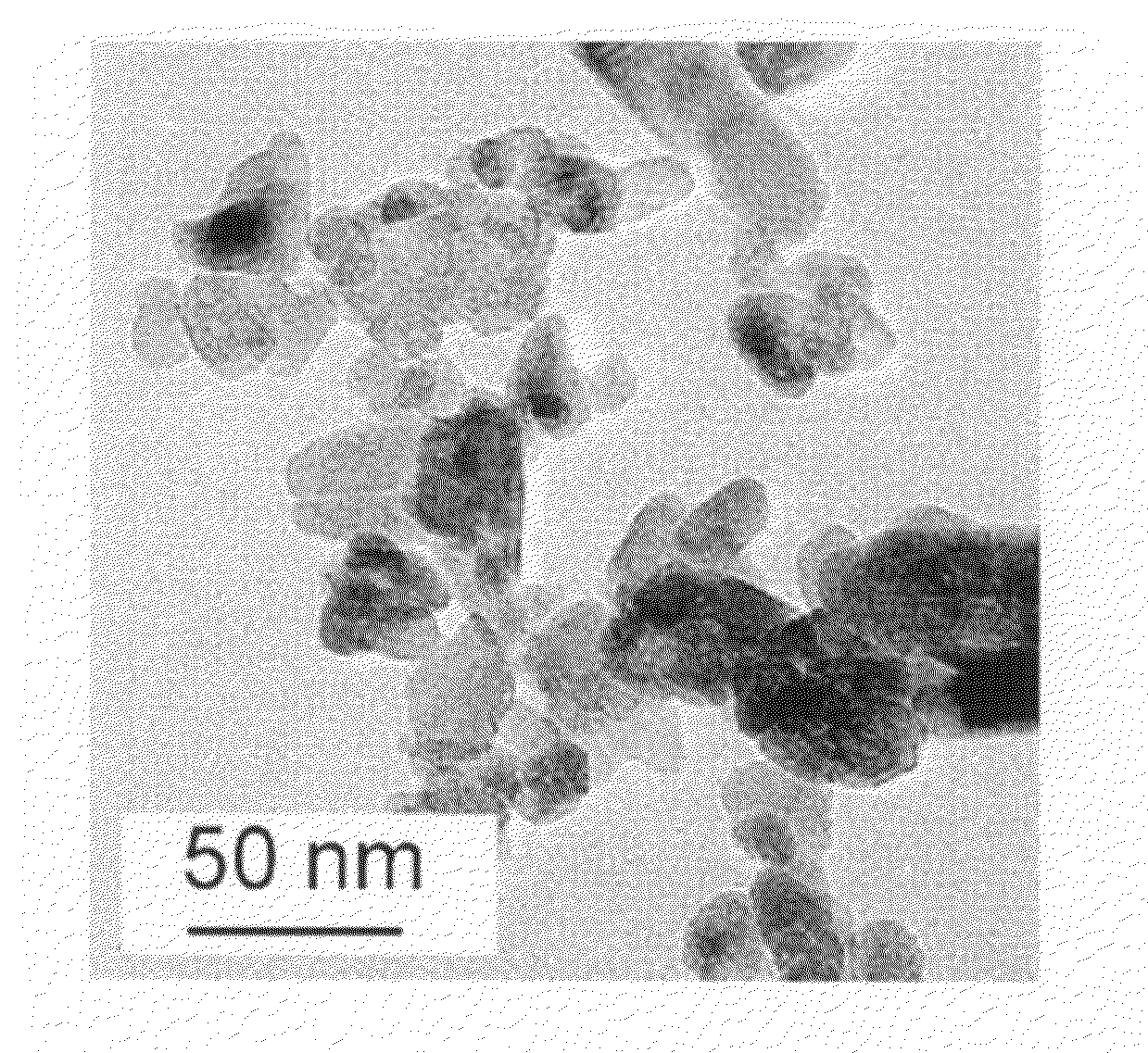One-step, paste-state mechanochemical process for the synthesis of zinc oxide nanoparticles
a mechanochemical process and zinc oxide technology, applied in the field of synthesis of zinc oxide nanoparticles by a paste-state mechanochemical process, can solve problems such as creating disadvantageous health or manufacturing concerns, and achieve the effect of reducing the agglomeration of primary particles
- Summary
- Abstract
- Description
- Claims
- Application Information
AI Technical Summary
Benefits of technology
Problems solved by technology
Method used
Image
Examples
example 1
[0044]Solid powder of zinc sulfate heptahydrate and potassium chloride were mixed and ground in a mortar for a period of time. The weight ratio of potassium chloride to zinc sulfate heptahydrate varied from 1:5 to 5:1. Alternatively, the weight ratio was 1:1 or 2:1. The grinding time varied from 5 to 30 minutes. Alternatively, the grinding time was 10 to 15 minutes. During the grinding process, the sample became a white paste. Then, potassium hydroxide powder was added to the mixture and ground for another period of time at room temperature. The grinding time varied from 5 to 30 minutes. Alternatively, the grinding time was 10 to 20 minutes. The molar ratio of potassium hydroxide to zinc sulfate heptahydrate varied from 2:1. The combined grinding of the potassium chloride and zinc sulfate heptahydrate, and followed by the addition of potassium hydroxide and more grinding is, for the purposes of this subject matter, considered a one-step process for synthesizing the zinc oxide nanopa...
example 2
[0049]ZnO nanoparticulates were prepared in the same manner used in Example 1 except that zinc nitrate hexahydrate was used instead of the zinc sulfate heptahydrate.
[0050]The XRD characterization showed the resulting products were ZnO with wurtzite structure. TEM images showed that the products had nearly with the same morphology as the ZnO nanoparticles described in Example 1.
example 3
[0051]Solid powder of zinc chloride, potassium chloride and a small amount of water were mixed and ground in a mortar for a period of time. The weight ratio of potassium chloride to zinc chloride varied from 1:5 to 5:1. Alternatively, the weight ratio is 1:1 or 2:1. The grinding time varied from 5 to 30 minutes. Alternatively, the grinding time was 10 to 15 minutes. During the grinding process, the sample became solution or white paste depending on the amount of water added. Then the mixture was left for 10 min. After this initial grinding process, potassium hydroxide powder was added to the mixture and ground for another period of time at room temperature. The grinding time varied from 5 to 30 minutes. Alternatively, the grinding time was 10 to 15 minutes. The molar ratio of potassium hydroxide to zinc chloride was 2:1. The combined grinding of the potassium chloride and zinc chloride, and followed by the addition of potassium hydroxide and more grinding is, for the purposes of thi...
PUM
 Login to View More
Login to View More Abstract
Description
Claims
Application Information
 Login to View More
Login to View More - R&D
- Intellectual Property
- Life Sciences
- Materials
- Tech Scout
- Unparalleled Data Quality
- Higher Quality Content
- 60% Fewer Hallucinations
Browse by: Latest US Patents, China's latest patents, Technical Efficacy Thesaurus, Application Domain, Technology Topic, Popular Technical Reports.
© 2025 PatSnap. All rights reserved.Legal|Privacy policy|Modern Slavery Act Transparency Statement|Sitemap|About US| Contact US: help@patsnap.com



